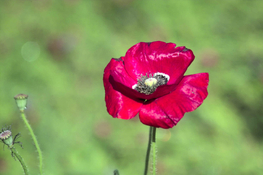CB_
Member
I've been searching for a while for the best way to get close to the colors that are in line with the great color photographers of the 20th century. Think Shore, Eggleston, many others. Of course, these legacy photographers were using legacy processes. The ones I'm most concerned with are Kodachrome and dye transfer. Both produced an iconic look and neither are available anymore. I currently shoot Portra 400 almost exclusively, both in 35 and 120 and print in the darkroom on DPII and Maxima when I can get my hands on it. This process certainly produces it's own nice look, which sometimes hits the mark, but I've definitely hit the ceiling with color and contrast on Portra, and am hungry for more. I especially find that when I need to flash the print, things go south very quickly in terms of saturation. I've tried shooting Ektachrome, but I'm not a huge fan of the way it looks generally. I'd also like to keep an analog process through to the print, and as we all know you can't print it optically.
As our film stocks and papers get more and more limited, I was curious if this forum could help on my search. Is Ektar the only option? And if so, would anyone be willing to share RA4 prints of it? There are a few threads around here with some, but I'm having a hard time building a comprehensive view. I've shot it and printed it myself, and I do like it occasionally, but I'm wondering if it's the only option. As much as it renders like a chrome sometimes, other times it can just feel weird (not sure how to quite describe it). Of course there's also reversal printing in the darkroom, but that's an insane hassle with less than ideal results. I've also considered Fujiflex - but I've yet to see an image printed on it either scanned or in real life, and spending close to $1000 for a shot in the dark isn't viable for me right now.
So, in addition to Ektar or Fujiflex prints, if anyone could share film stocks, printing methods, or any way I'm not thinking of to get closer to this classic, iconic look in today's world it would be greatly appreciated.
As our film stocks and papers get more and more limited, I was curious if this forum could help on my search. Is Ektar the only option? And if so, would anyone be willing to share RA4 prints of it? There are a few threads around here with some, but I'm having a hard time building a comprehensive view. I've shot it and printed it myself, and I do like it occasionally, but I'm wondering if it's the only option. As much as it renders like a chrome sometimes, other times it can just feel weird (not sure how to quite describe it). Of course there's also reversal printing in the darkroom, but that's an insane hassle with less than ideal results. I've also considered Fujiflex - but I've yet to see an image printed on it either scanned or in real life, and spending close to $1000 for a shot in the dark isn't viable for me right now.
So, in addition to Ektar or Fujiflex prints, if anyone could share film stocks, printing methods, or any way I'm not thinking of to get closer to this classic, iconic look in today's world it would be greatly appreciated.














